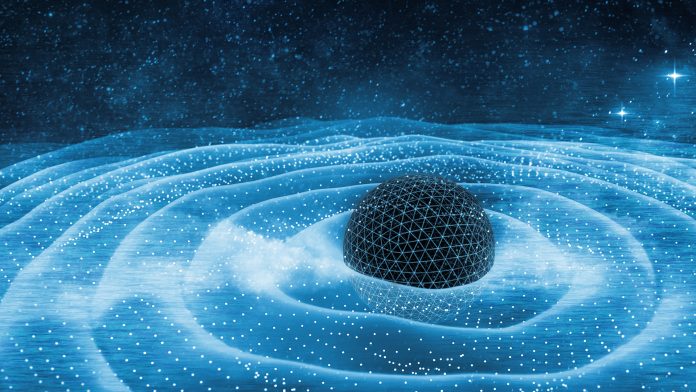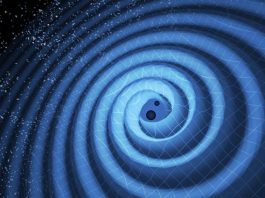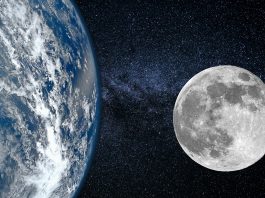Giancarlo Cella, INFN Researcher and Data Analysis Coordinator of Virgo, explains more about Italy’s Virgo interferometer, designed to detect gravitational waves predicted by Einstein’s general theory of relativity.
Designed for the purpose of detecting gravitational waves from astrophysical sources, Virgo is a laser interferometer with two perpendicular, 3km-long arms. Originally approved by the French National Centre for Scientific Research (CNRS) and the Italian Institute for Nuclear Physics (INFN) in the early 1990s, the VIRGO gravitational wave detector was constructed just outside of Pisa, Italy, at the European Gravitational Observatory (EGO). EGO is responsible for ensuring the functioning, maintenance, and operation of the Virgo detector. It is also in charge of the site infrastructure, the computing centre, and the promotion of several R&D activities.
Virgo started as an initiative of Italy and France. EGO, the institution that hosts the Virgo detector, was funded by INFN and CNRS. In 2021, they were joined by the Dutch National Institute for Subatomic Physics (Nikhef). Over the last 20+ years, the Virgo Collaboration has been joined by 146 laboratories located in 14 countries, with a total of over 700 scientists working in the Virgo Collaboration.
The Innovation Platform spoke to Giancarlo Cella, INFN Researcher and Data Analysis Coordinator of Virgo, to learn more about Virgo, including its capabilities and recent activities.

What are the current key aims and objectives of the Virgo Collaboration?
We aim to detect and study gravitational wave signals. Gravitational waves are perturbation of the fabric of spacetime, and can be understood intuitively as fluctuations of the distance between two physical reference points, such as two masses.
These fluctuations are small: the typical change of distance between the Virgo mirrors is 1/10000th the width of a proton. Therefore, a crucial objective is to improve the sensitivity of our gravitational wave detectors, which is reduced by all kinds of noises. We are continuously working to improve the performance of our instrument, which is a formidable scientific and technological effort.
Another important activity is the analysis of our data. We want to extract all the possible information, with the best confidence allowed by the detector sensitivity. We need to use state-of-the-art theoretical models and analysis techniques, which in some cases are limited by their computational cost.
Currently, we have been able to detect about 100 signals. The signals all came from a specific class of sources, which is a coalescence between two extremely compact astrophysical objects – black holes and neutron stars.
We learnt a lot from these events, but we now want to know more. We aim to detect new kinds of gravitational wave sources, such as isolated neutron stars, supernovae explosions, and gravitational waves generated in the earliest phases of our Universe’s life.
Gravitational waves are a new way to look at the Universe and, in some cases, a gravitational wave source will also send us other messengers, such as electromagnetic waves or neutrinos. At this stage, we have detected only a single event of this kind and, again, we learnt a lot from it. Another key objective is to create the conditions for more of these.
What has 2022 looked like for Virgo?
This year has mainly been dedicated to preparation. The last data-taking period ended in March 2022. This year of preparation has been an intense activity, targeted both to the finalisation of the analysis of the data we obtained and to the improvement of the detector. The COVID-19 pandemic had an impact on all this, but especially on the detector commissioning, which requires a lot of hands-on work onsite.
However, there is optimism. The scientific results obtained from the analysis are very relevant, spanning from tests of general relativity to cosmology to the study of astrophysical populations, and are documented in more than 50 scientific publications. Now, we are moving out from this phase, and we are starting to dedicate all efforts to the preparation of the next scientific run, which will start in March 2023.
How do you work with other detectors to further gravitational wave science?
Virgo is a component of a larger collaboration, which is also composed of LIGO (two detectors in the US, and the GEO detector in Germany) and KAGRA (one detector in Japan). We work in total co-operation from the point of view of observing science, with a common scientific community which analyses the data.
The activities connected to the improvement of the detectors are more independent, as each side of the collaboration has the responsibility of their instruments, but again there is a high level of co-operation and sharing of experiences. A collaborative regime is well-suited to the kind of science we pursue, as a big gain is obtained by analysing the data acquired from the full network of detectors in a coherent way. A particularly important example is about the localisation of the source in the sky. This requires at least three detectors working at the same time, and a good precision in sky localisation is the first step for the study of an electromagnetic counterpart. During the run, we distribute to the global scientific community, with a low delay, the corresponding alerts accompanied by the information about the source position. This allows, for example, telescopes to be pointed in the right direction to look for a possible companion non-gravitational signal.
What has innovation meant for your work in recent years?
As I said, one of our main activities is the improvement of the detector sensitivity. This requires continuous research work, which includes hunting for innovative strategies for noise mitigation.
Fundamental research of new materials for improving the quality of our mirrors is continuously pursued. The mirrors should have a very high optical quality, but also extreme mechanical properties in order to get a very low level of thermal noise. Another important activity is the study of new methods to evade the sensitivity limit which originates from fundamental quantum mechanical effects.
Continuous innovation and an interdisciplinary approach which puts together many branches of physics and technology is really at the core of gravitational wave detectors’ science.
What do you hope to achieve in 2023 and beyond?
The new scientific run will start in March 2023. We will have an improved sensitivity, and we expect a larger rate (about a factor of eight) of detected events, compared with the previous data-taking period. This means that we will be able to extract, with higher confidence, information of great physical interest, but also that it will be possible to detect, for the first time, new kind of phenomena. It will be a big challenge for us. We will test our ability to manage a larger flux of information and to produce high-quality results.
Moving further into the future, we have the exciting perspective of further improvement of our sensitivity, with more and more space for new physics. At the same time, we will be able to push our infrastructures to their ultimate limit, again testing innovative technologies and anticipating some of the solutions which will be applied more extensively by third-generation detectors in the next decades.
About Giancarlo Cella
Giancarlo Cella is a Senior Researcher at the INFN (Italian Institute of Nuclear Physics) in Pisa, Italy. He started his career working on perturbative QCD and lattice gauge theory. Currently, he is mainly involved in the LIGO-Virgo-KAGRA collaboration, aimed at the direct observation of gravitational waves, where he co-ordinates data analysis activities for Virgo. He is interested mainly in phenomenology and detection of stochastic background of gravitational waves, gravitational wave data analysis and advanced detectors.
Giancarlo Cella
Data Analysis Coordinator
Virgo
https://www.virgo-gw.eu/
https://www.facebook.com/EGOVirgoCollaboration/
https://twitter.com/ego_virgo
https://www.instagram.com/ligo_virgo/
Please note, this article will also appear in the twelfth edition of our quarterly publication.









